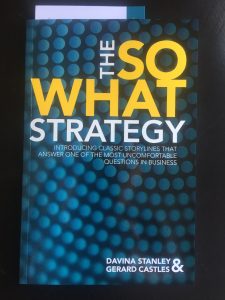I don’t claim this to be a good war story, but it is a war story has had a deep impression on me.
Early on in my career, I was asked by the managing partner on the project to help a struggling manager to help develop their plan for the business. When I got into the weeds, the problem was essentially an operations strategy and planning project. I brought a little rigor to the analysis, and I worked with the manager to break down scenarios and workflows and applying Little’s Law (i.e., average inventory equals average cycle time times average throughput) to validate the strategy, offer operational improvement suggestions, and calibrate the model. When the results were presented to the executives, they were pretty impressed. I was later privately told that I had helped to save the manager’s job. Take that for what it’s worth, but in any case, that made me feel really good. A key was that I helped to facilitate the strategy and analysis process, not completely do the work on my own.
Years later and in a totally different industry, I was asked to help with an operational assessment where the company had lost a tremendous amount of institutional business in the past year due to sales and operations processing issues. The executive team wanted me to take a look at the total business and dissect where things went wrong. There was some subtext that they believed that the one of the division managers had crashed the ship. Though it was never stated explicitly, I think the executives wanted me to find the implicating evidence. I ended up using similar techniques to the first project; first I tried to determine why people churned out as customers, and then once I attributed it to cycle times, I essentially used Little’s Law to determine why cycle times went up so drastically. In the end, what I found was that cycle time increases drove severe customer churn and that cycle time increases were not due to the manager in question. It was an issue caused by and owned at a broader level. I was done. Along with process recommendations, I presented the analysis results to the executive team. They were happy, but a bit surprised that I had not found implicating evidence for the manager. Once the project was complete, I was happy. I was happy that the client was happy, and I was happy with my approach and sticking to science as opposed to being swayed by biases or internal politics of the client company. Months later, I found out that the executive team ended up firing the manager. I’ve had mixed feelings ever since, ones that have never been fully resolved.
I ask questions like, do management consultants have impacts on people’s jobs? Or do management consultants feel that they are so important that they have impacts on people’s lives? Who owns the results? Is it the management team? Who owns the implications if people’s jobs are lost? What if jobs are gained? The answers to these questions are both debateable and situational. All said, to this day certain project types and situations trigger bad vibes for me, and I try to avoid them where possible.





